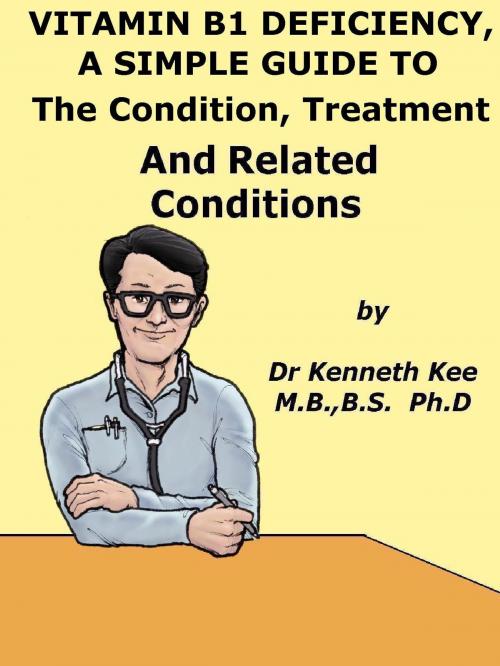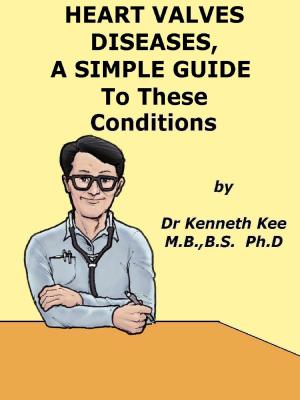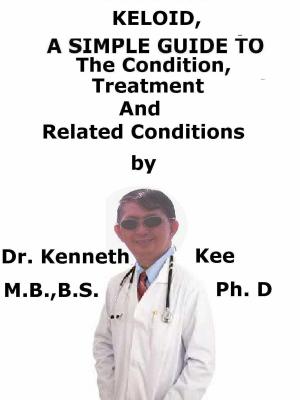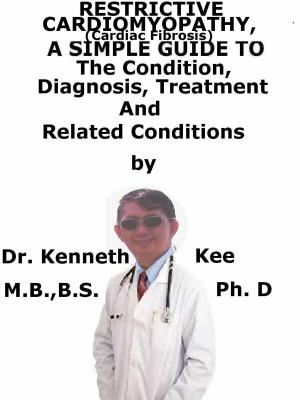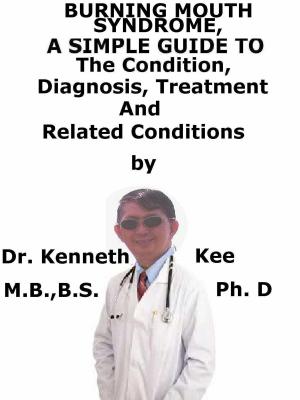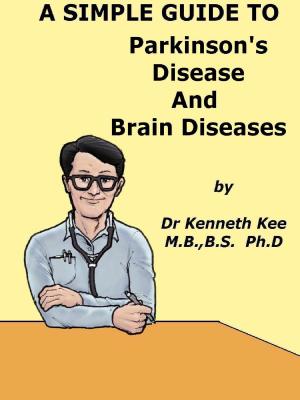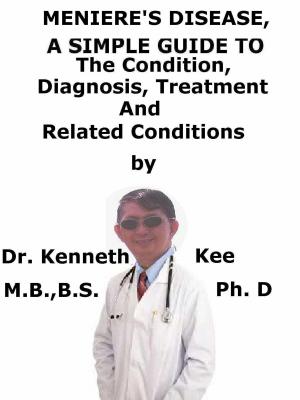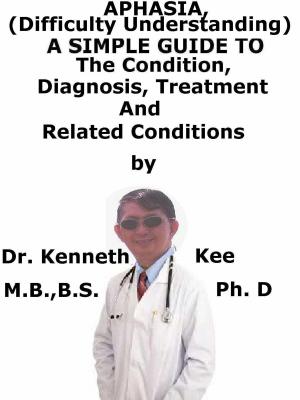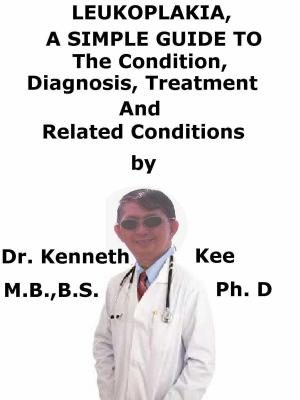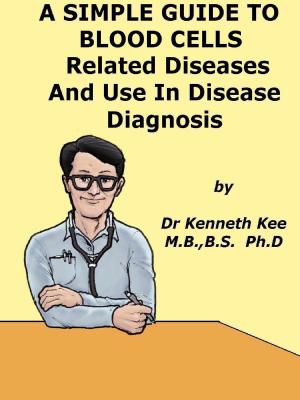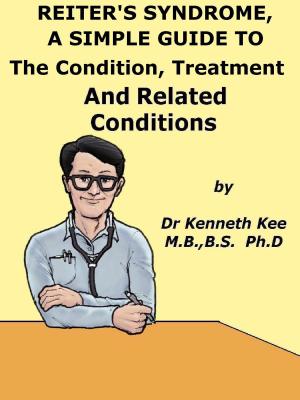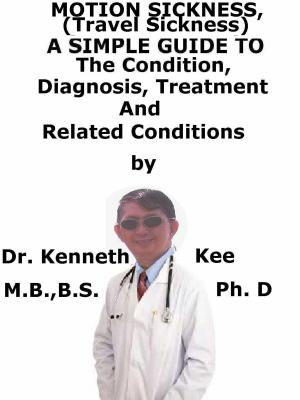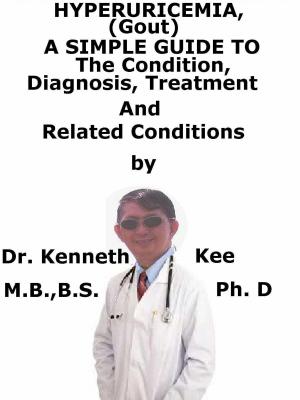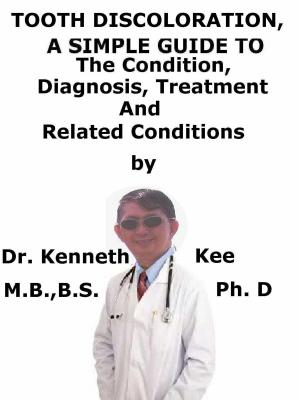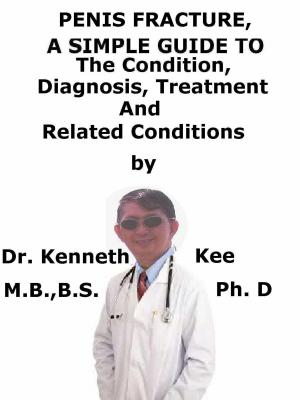Vitamin B1 Deficiency, A Simple Guide To The Condition, Treatment And Related Conditions
Nonfiction, Health & Well Being, Health, Nutrition & Diet, Vitamins, Medical, Patient Care, Nutrition| Author: | Kenneth Kee | ISBN: | 9781310905599 |
| Publisher: | Kenneth Kee | Publication: | January 18, 2015 |
| Imprint: | Smashwords Edition | Language: | English |
| Author: | Kenneth Kee |
| ISBN: | 9781310905599 |
| Publisher: | Kenneth Kee |
| Publication: | January 18, 2015 |
| Imprint: | Smashwords Edition |
| Language: | English |
Vitamin B1 is a water-soluble vitamin present in many foods.
Vitamin B1 is found in meat, poultry, vegetables and fruits
Vitamin B1 is important for heart function.
It is also important for peripheral nerve function
Vitamin B1 Deficiency is a silent disease
Severity of Vitamin B1 deficiency is inversely related to age
One cause of Vitamin B1 deficiency is malabsorption
The other cause is poor food intake function
It is a cause of peripheral neuropathy
There is heart failure and cardiomyopathy
There may be brain hemorrhage and mental confusion
In some cases there are psychotic manifestations
Prevention of Vitamin B1 Deficiency is as important as treatment.
Treatment of Vitamin B1 Deficiency is taking vitamin B1 supplements
And a diet containing red meat, egg yolks, fortified milk and liver,
Vegetable sources include whole grain cereals, orange and green vegetables
-An original poem by Kenneth Kee
Interesting Tips about the Vitamin B1 Deficiency
A Healthy Lifestyle
-
Take a well Balanced Diet
-
The goal of Vitamin B1 Deficiency treatment is the prevention of peripheral neuropathy and heart failure.
Therefore prevention of Vitamin B1 Deficiency is as important as treatment.
Vitamin B1 Deficiency treatment and prevention measures are:
Vitamin B1 supplements
a. Vitamin B1 is given at 5 mg to 30 mg per day orally until the response is adequate.
The typical dose for severe deficiency can be up to 300 mg per day.
For reducing the risk of getting cataracts: a daily dietary intake of approximately 10 mg of thiamine.
As a dietary supplement in adults, 1-2 mg of thiamine per day is commonly used.
Healthcare providers give thiamine shots for treating and preventing symptoms of alcohol withdrawal
- Keep bones and body strong
Bone marrow produces our blood
Eat foods rich in calcium like yogurt, cheese, milk, and dark green vegetables.
Eat foods rich in Vitamin D, like eggs, fatty fish, cereal, and fortified milk.
Eat food rich in Vitamins B and C such as green vegetables and fruits
Zinc and other minerals are important to the body
- Get enough rest and Sleep
Avoid stress and tension
- Exercise and stay active.
It is best to do weight-bearing exercise such as walking, jogging, stair climbing, dancing, or lifting weights for 2½ hours a week.
One way to do this is to be active 30 minutes a day at least 5 days a week.
Begin slowly especially if a person has not been active.
- Do not drink more than 2 alcohol drinks a day for a man or 1 alcohol drink a day for a woman.
Alcohol use also increases the chance of falling and breaking a bone.
Alcohol can affect the neurons and brain cells.
- Stop or do not begin smoking.
It also interferes with blood supply and healing.
Chapter 1
Vitamin B1
Vitamin B1 is present in all living human tissues as an important enzyme in the metabolism of carbohydrates.
Functions of Vitamin B1:
-
It is also required for metabolism of alpha-ketoacids and pyruvates in its carbohydrate form,
-
It is also a co-enzyme of pyruvate dehydrogenase and alpha-ketoglutarate both essential in carbohydrate metabolism.
-
It is also essential in production of acetylcholine.
-
It also plays a part in energy metabolism for neurons and cardiac muscles.
Vitamin B1 is found primarily in
-
Animal sources - liver. egg yolks
-
Vegetable sources: Vitamin B1 is found in fresh green and yellow vegetables, cereals, whole grains and potatoes.
Unfortunately most of the active ingredients of Vitamin B1 are lost in cooking.
Optimal requirements of Vitamin B1 are:
- Adults and children above puberty: 1 mg daily
Pregnant mother and elderly may need double the amount.
- Infants and children before puberty: 0.5 mg daily
Vitamin B1(thiamine) Deficiency is a medical condition caused by the deficiency of the human body of Vitamin B1 as a result of inadequate dietary intake or impaired absorption.
Vitamin B1 is a water-soluble vitamin present in many foods.
Vitamin B1 is found in meat, poultry, vegetables and fruits
Vitamin B1 is important for heart function.
It is also important for peripheral nerve function
Vitamin B1 Deficiency is a silent disease
Severity of Vitamin B1 deficiency is inversely related to age
One cause of Vitamin B1 deficiency is malabsorption
The other cause is poor food intake function
It is a cause of peripheral neuropathy
There is heart failure and cardiomyopathy
There may be brain hemorrhage and mental confusion
In some cases there are psychotic manifestations
Prevention of Vitamin B1 Deficiency is as important as treatment.
Treatment of Vitamin B1 Deficiency is taking vitamin B1 supplements
And a diet containing red meat, egg yolks, fortified milk and liver,
Vegetable sources include whole grain cereals, orange and green vegetables
-An original poem by Kenneth Kee
Interesting Tips about the Vitamin B1 Deficiency
A Healthy Lifestyle
-
Take a well Balanced Diet
-
The goal of Vitamin B1 Deficiency treatment is the prevention of peripheral neuropathy and heart failure.
Therefore prevention of Vitamin B1 Deficiency is as important as treatment.
Vitamin B1 Deficiency treatment and prevention measures are:
Vitamin B1 supplements
a. Vitamin B1 is given at 5 mg to 30 mg per day orally until the response is adequate.
The typical dose for severe deficiency can be up to 300 mg per day.
For reducing the risk of getting cataracts: a daily dietary intake of approximately 10 mg of thiamine.
As a dietary supplement in adults, 1-2 mg of thiamine per day is commonly used.
Healthcare providers give thiamine shots for treating and preventing symptoms of alcohol withdrawal
- Keep bones and body strong
Bone marrow produces our blood
Eat foods rich in calcium like yogurt, cheese, milk, and dark green vegetables.
Eat foods rich in Vitamin D, like eggs, fatty fish, cereal, and fortified milk.
Eat food rich in Vitamins B and C such as green vegetables and fruits
Zinc and other minerals are important to the body
- Get enough rest and Sleep
Avoid stress and tension
- Exercise and stay active.
It is best to do weight-bearing exercise such as walking, jogging, stair climbing, dancing, or lifting weights for 2½ hours a week.
One way to do this is to be active 30 minutes a day at least 5 days a week.
Begin slowly especially if a person has not been active.
- Do not drink more than 2 alcohol drinks a day for a man or 1 alcohol drink a day for a woman.
Alcohol use also increases the chance of falling and breaking a bone.
Alcohol can affect the neurons and brain cells.
- Stop or do not begin smoking.
It also interferes with blood supply and healing.
Chapter 1
Vitamin B1
Vitamin B1 is present in all living human tissues as an important enzyme in the metabolism of carbohydrates.
Functions of Vitamin B1:
-
It is also required for metabolism of alpha-ketoacids and pyruvates in its carbohydrate form,
-
It is also a co-enzyme of pyruvate dehydrogenase and alpha-ketoglutarate both essential in carbohydrate metabolism.
-
It is also essential in production of acetylcholine.
-
It also plays a part in energy metabolism for neurons and cardiac muscles.
Vitamin B1 is found primarily in
-
Animal sources - liver. egg yolks
-
Vegetable sources: Vitamin B1 is found in fresh green and yellow vegetables, cereals, whole grains and potatoes.
Unfortunately most of the active ingredients of Vitamin B1 are lost in cooking.
Optimal requirements of Vitamin B1 are:
- Adults and children above puberty: 1 mg daily
Pregnant mother and elderly may need double the amount.
- Infants and children before puberty: 0.5 mg daily
Vitamin B1(thiamine) Deficiency is a medical condition caused by the deficiency of the human body of Vitamin B1 as a result of inadequate dietary intake or impaired absorption.
